|
|
|
Книги издательства «Schirmer/Mosel»
|
In mesmerizing photographs Mondino presents the guitar as the aphrodisiac, sex symbol, and fetish of rock and pop, with players famous and unknown. |
|
Bettina Rheims has been one of the most acclaimed woman photographers of France since the early 80s, when she first showed her sensational female nudes and portraits. Film stars, actresses and artists, models, friends, country fair acrobats and strippers— known and unknown women have posed in front of her lens during the past twenty years. Female Trouble, first published in 1989 by Schirmer/Mosel, presents a selection of some one hundred photographs—brilliant studies on womankind mostly in black and white, her favored technique mastered with a unique subtlety. The common denominator of this collection of photographs is Rheims’ sensitive and delicate relation with her sitters, revealing an extraordinary originality, empathy, sense of style and feeling for both the manifold facets of femininity and pictorial eroticism. The plates are preceded by an introductory essay by Catherine Deneuve. |
|
Beaumont Newhall (1908-1993) war der erste Kurator für Photographie am Museum of Modern Art, New York. Unterstützt von Ansel Adams baute er ab 1940 die Abteilung — die erste ihrer Art in einem Museum — auf, nachdem er bereits 1937 eine legendäre Ausstellung zum 100. Geburtstag der Photographie im MoMA organisiert hatte. Der damalige Katalog wurde zur Grundlage seiner Geschichte der Photographie, die bald zum unbestrittenen Standardwerk einer ebenso wissenschaftlichen wie anschaulichen Vermittlung von Photographiegeschichte wurde und bis heute als das kompetenteste Buch zum Thema auf dem Markt gilt. Die sorgfältig überarbeitete, um ein weiteres Textkapitel und zahlreiche Bildbeispiele ergänzte 5. Auflage des amerikanischen Originals lag der ersten deutschen Übersetzung zugrunde, die 1984 in unserem Hause erschien. Wir freuen uns, dieses unverzichtbare Handbuch zur technischen und ästhetischen Entwicklung der Photographie von ihren Anfängen 1839 bis zur Gegenwart jetzt in einer broschierten Neuauflage anbieten zu können. Beaumont Newhall, der nicht nur als Photohistoriker und Autor zahlreicher Bücher, Aufsätze und Katalogbeiträge internationalen Ruf genoß, sondern auch selbst photographierte, leitete ab 1948 das George Eastman House in Rochester, die weltweit angesehenste und umfangreichste Sammlung für Photographie. |
|
«Jim Rakete hat sich schon immer für Menschen interessiert, die etwas bewegen — ob in der Politik, auf der Bühne, in den Medien oder in der Kunstszene. Schauplatz ist im wesentlichen Berlin, und sein Spektrum reicht von der Bundeskanzlerin über Kulturschaffende jeder Couleur bis zum Boxweltmeister. Wir sehen uns lauter»vertrauten Fremden»gegenüber, deren Namen jeder kennt, die uns hier aber näher zu kommen scheinen, als ihr öffentliches Bild, ihr Image, es jemals erlauben würde. Das Geheimnis dieser ungewohnten Nähe liegt in Jim Raketes Art zu photographieren. Da es ihm um eine im doppelten Wortsinn ungeschminkte Wahrheit geht, hat er sich bei seinem jüngsten Projekt einer Technik bedient, die heute schon als exotisch gilt und bald nicht mehr praktizierbar sein wird: Die hier versammelten Portraits sind mit einer alten Plattenkamera aufgenommen, die viel Handarbeit, natürliches Licht und vom Modell vergleichsweise langes Stillhalten erfordert. Im»Glück des Verzichts»- auf das digitale Sofortbild, auf Manipulationen, Styling und Dynamik — liegt für ihn die Chance, den Augen-Blick zwischen Photograph und Modell zu verlängern, sich selbst und dem Portraitierten die Zeit zu geben, die man braucht, um die Zeit anzuhalten: eine Achtelsekunde. Die meisten der hier versammelten Aufnahmen — darunter auch Landschaften, Impressionen, verschwindende Orte — entstanden während des Jahres 2007 im Vorfeld einer Werkausstellung von Jim Rakete bei Camera Work in Berlin.» |
|
German photo artist Thomas Ruff is a master of conceptual serial photography. He made a name for himself in the early eighties with oversized, superrealistic color portraits of his artist friends and as a pioneer of the Diasec process used to mount photographic images onto acrylic glass, thereby obviating frames, liberating photography from the print gallery and paving the way to the grand gallery museum walls for large-format photos. This collection presents selected works from Thomas Ruff's large-format series, beginning with his small Interiors, the large Portraits, his Architectural Photos, the Starry Skies, his abstract Substrata, the Nudes, which make use of pornographic material taken from the internet, and finally his latest creation: Stellar Landscapes. The book features essays by Thomas Weski and Okwui Enwezor and appears in conjunction with an extensive Thomas Ruff retrospective exhibition at the Haus der Kunst in Munich. |
|
From the world's most foremost photographer of women comes the splendid celebrations of female form and mystique — a massive collection that spans 300 pages and covers every aspect of Peter Lindbergh's impressive body of work. Nearly every beautiful woman of the past two decades has posed for Peter Lindbergh, from supermodels to movie stars. This splendid monograph represents the definitive collection of Lindbergh's considerable oeuvre: classic fashion photographs, arresting candids, portraits of female celebrities — including Madonna, Isabella Rossellini, Sharon Stone, Catherine Deneuve, Charlotte Rampling, Darryl Hannah — and of course his signature shots of the world's supermodels. |
|
The story of the life of French photographer Henri Cartier-Bresson reads like a novel: a gifted young man from a wealthy Paris family finds his calling via painting, the Surrealists, acting, and film. Turning his Leica camera into a magic instrument, he revolutionizes the art of photography. First published on the occasion of his 100th birthday, his illustrated biography is now available again. |
|
Francisco de Zurbaran (1598-1664) was one of the great Spanish painters of the Baroque period. Today, his idiosyncratic, very Catholic imagery fascinates us even as it has become alien and, in essence, inaccessible. In its aesthetic-religious dimension, his work — indebted to the Spanish mysticism of the sixteenth and seventeenth centuries — possesses a unique depth and rigor. Christ on the cross, dead martyrs and saints in reverie, meditating monks, the superiors of monastic orders that today have almost ceased to exist: In his mostly dark paintings, they are depicted so realistically, one feels one could reach out and touch them. And yet they also seem to be emissaries from another world. For Zurbar n, a contemporary of Vel zquez and Murillo, painting and religious meditation were complementary aspects of spiritual observance. Perhaps it is precisely this quality in his art that makes his paintings the center of our interest today. |
|
Pictures from the family archive, film stills, PR images, and paparazzi shots trace the life and cinematic career of Ingrid Bergman in a publication authorized by her family. |
|